Pinto’s Chef Yo Is Ready For His Close-Up
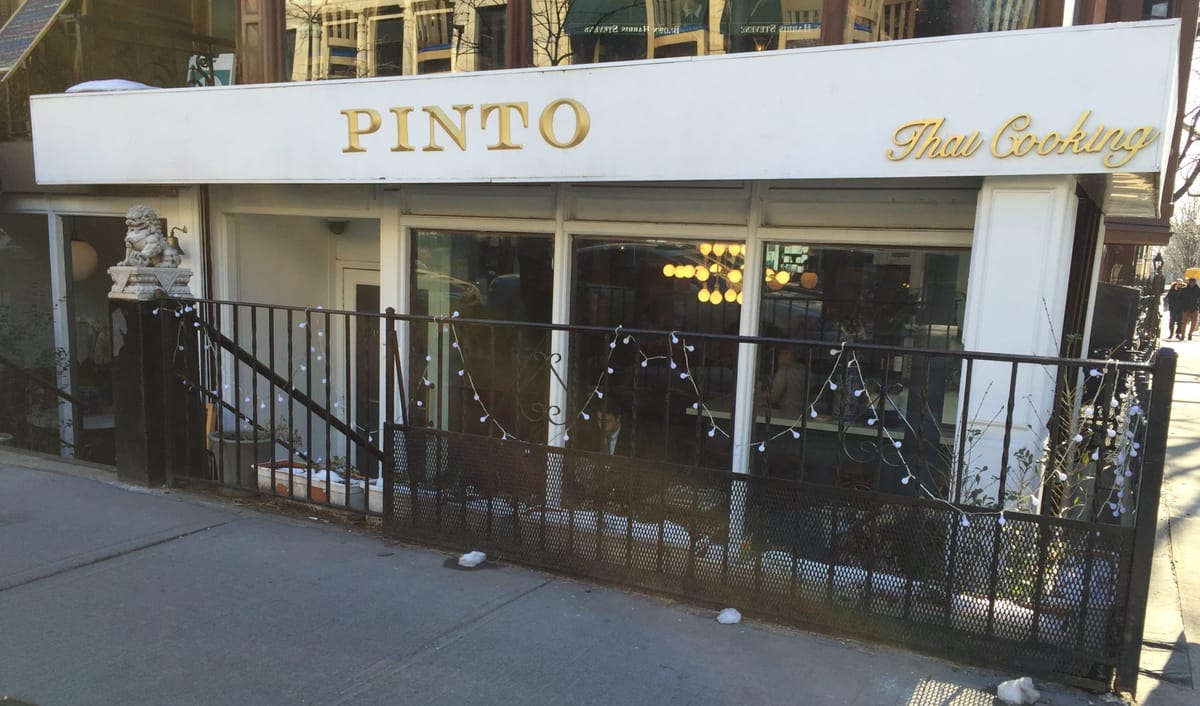

On his first day off since November, the first thing Chef Yo of Pinto Brooklyn decided to do was go see Sunset Boulevard on Broadway. “Let’s go see Glenn Close!” he said of the show’s star. “Sunset Boulevard was always my inspiration in theater—I love the music. I love the production. I love the story line.”
Teerawong Nanthavatsiri, also know as Chef Yo, is a big fan of the theater. He moved to New York from Thailand to study stage direction at Columbia University. “I came here in 2001, a week before 9/11…. I used to come [to New York] a lot with my friends, and my mom brought me here when I was a kid to see all the Broadway shows. That’s why I studied theater,” the chef explains from Pinto Brooklyn, his restaurant at 128 Montague Street that just celebrated its one-year anniversary.
When first arriving to the States, Chef Yo immersed himself in school and the theater, until one day he realized that he didn’t have any Thai friends. “I missed all my friends. I wanted to speak Thai. I wanted to [meet] more Thai friends, [which] brought me to work in a Thai restaurant…to get into a Thai community.” He alternated between the Spice restaurant in Greenwich Village and the Sea restaurants in the East Village and Williamsburg during school semesters and gradually worked his way up from busboy, to runner, to server, and eventually manager.
“Right [as] I was about to graduate in 2005, my mom came to New York and saw the restaurant that I worked [at] and she thought, ‘That’s a good business,’” Chef Yo explains. “I didn’t want to go back to Thailand yet. I wanted to stay longer in New York [but] finding a job directing is not easy….” His mother suggested, “Why don’t you invest in [a restaurant] business here and make some money? When you have enough money you can go back to work as a director.” Intrigued by this idea, he took the funds his mother provided and opened a “small, tiny restaurant on Christopher Street” in 2005—his first Pinto restaurant.
“She always wanted me to do business anyway. She didn’t want me to do theater. She wanted me to [have] a secure job… you know, not an artist or director,’’ he says.
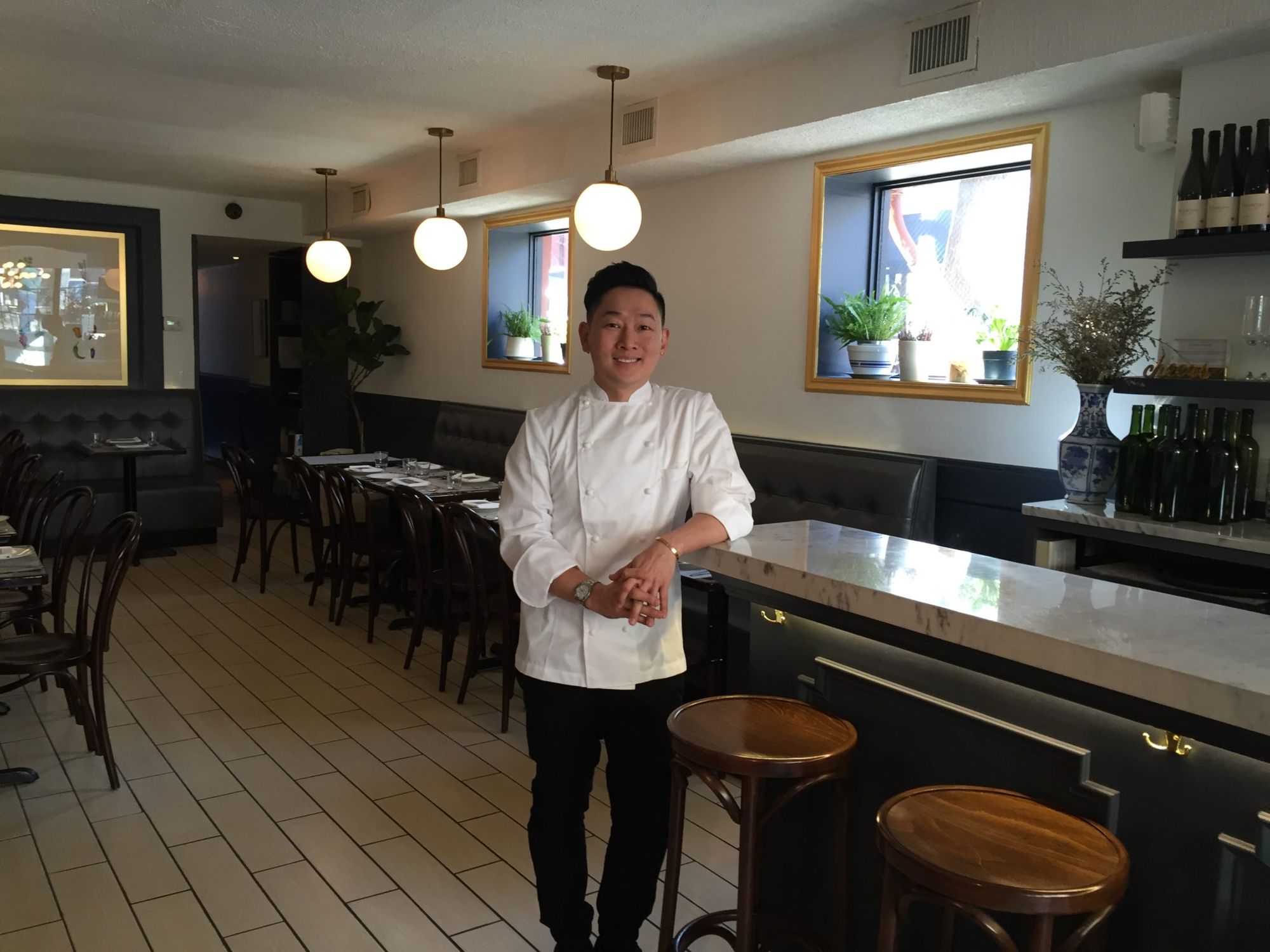
Giving the restaurant a short, catchy Thai name, Pinto, the Thai version of a bento box, Chef Yo dove into the restaurant business. “I was so energetic…I thought, ‘I’m going to have my own business now…and then after I make money…I can go do theater or whatever I want.’ I was living in a bubble at the beginning. I was 25, 26, very young. I jumped into the business without knowing it. I opened a restaurant without knowing how to cook.”
Pinto’s grand opening was “crazy,” he says, with the restaurant filled with friends and family the first day, but the second day brought Chef Yo “back to reality.” With only a few customers on his second day, Chef Yo says, “it was kind of a slap in my face.” He asked himself, “What am I going to do?”
Making an executive decision, Chef Yo cut his entire staff except for his general manager and head chef, both long-time friends of his. He had known Chef Tony Phutchaphong, his best friend back in Thailand, for 20 years. Chef Tony went to culinary school and had worked for Jean Georges for a couple of years before leaving to work at Pinto in 2006. “So literally in the kitchen it was just him and me, two people, and in the front was Kobsak Songyoo, the general manager,” Chef Yo recalls.
During the early years, Chef Tony taught Chef Yo everything in the kitchen from how to cook, how to cut meat, how to store vegetables, and how to organize all the ingredients and tools, “I had no idea we had to organize even the refrigerator at the time,” Chef Yo says with a laugh. “He’s the one who gave me [Thomas Keller’s] The French Laundry Cookbook, that’s the first [cookbook] I read. I was like, ‘What’s this going on in here? I have no idea what it is. I [didn’t] understand the technical terms at all.’ So [Chef Tony] had to explain what [everything] was, what we were doing…we tried a couple of dishes—[then] the entire book…It was fun.”
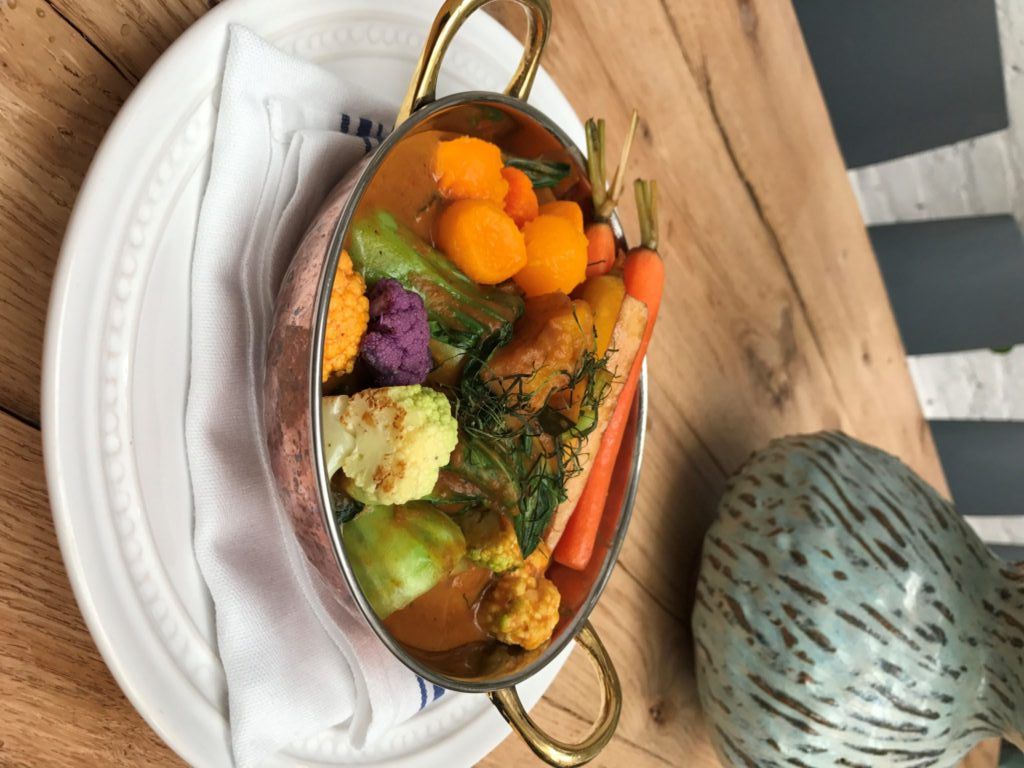
The first three years managing Pinto were a struggle, though Chef Yo says it wasn’t necessarily because business was slow but rather how he perceived himself there. At the time he looked at it as just a job, as a way to make enough money for him to go back to his first love—theater. “[I’d] go to work every morning…I didn’t want to be there. I just wanted to make it happen and then go somewhere else. I was not happy here. I did it without passion. But after 2 years passed, after [Chef Tony] gave me The French Laundry Cookbook, I thought, ‘This is art,’” changing the way he perceived his role at Pinto and making him view the restaurant as his “own theater.” He elaborates, “The restaurant is actually a theater. I have to make a show every night. I have to train my staff, I have to train myself, I have to audition my vegetables and meats…to fit into the recipe, which is like a script.”
After gaining his new outlook he says, “My energy changed. My work changed. The people who worked with me totally felt [it]…. I came to work with the feeling that I wanted to learn something, like, ‘What can we do with this ingredient to make it Thai food?’ I think that’s the fun part and that’s how I became happy with my job.”
He continues, “I think it’s important to every job – [don’t] sit there wishing something will happen…you have to see what you already have and enjoy it. I already had the business, which [many] people my age [would have] want[ed]…but I had it. Why would I ignore it? Why would I not value it? It’s very important to look at what you already have and make it work.”
Equipped with a new positive attitude, Chef Yo set out to achieve what was at the time a unique business model for a Thai restaurant—to “make everything homemade and farm fresh,” and change the menu seasonally. Chef Yo says, “We started in 2006 and we did farm fresh Thai cooking…people didn’t even know what farm-to-table was [at the time].”
Chefs Tony and Yo also tried introducing some dishes that people weren’t able to find at other Thai restaurants at the time. Along with the ubiquitous pad thai, they also served a few more adventurous dishes, like kao-soi – a yellow curry with noodles from Northern Thailand. “It’s very popular now,” Chef Yo says, insisting that you can now order it at every Thai restaurant.
With this unique take on Thai food, straying from the usual, cheaper menu items, it took a while for Pinto to hit its stride. Finally, with the popularity of Yelp and other food Apps, Chef Yo says that customers began to post positive reviews of Pinto online, helping to bring in business and build a loyal following.
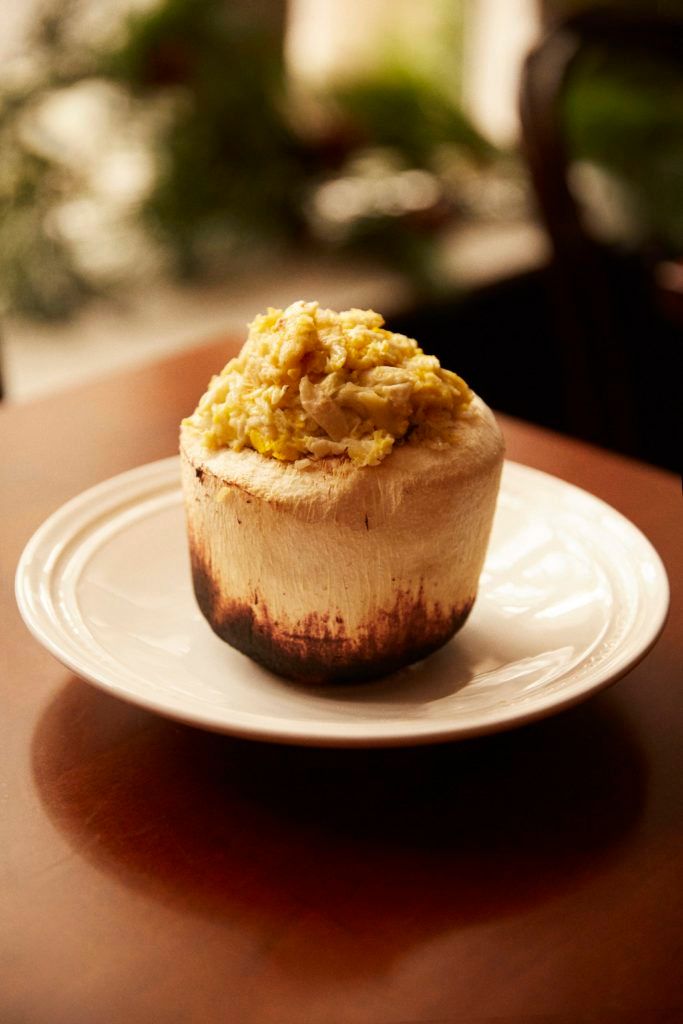
After six years working closely together in the Christopher Street kitchen creating recipes and building the Pinto brand, Chef Tony left New York and returned to Thailand in 2012, leaving Chef Yo as the head chef. As he says, Chef Tony “left [me] prepared and left [me] everything, even the recipes.”
By 2016, Pinto was ready to expand, with Chef Yo opening Pinto Brooklyn in Brooklyn Heights in January 2016 and relocating his West Village location from Christopher Street to a bigger location at 117 West 10th Street in November 2016.
“I always loved Brooklyn Heights. To me, Brooklyn Heights is like the West Village.” Chef Yo remembers when his Brooklyn outpost was still under construction, “We had a sign ‘Pinto is coming.’” A woman passed by with her kids and asked him, “Is it Pinto from Christopher Street in the West Village?” She was a former West Village resident and Pinto customer. “Ten years ago and she was my customer in the West Village and she moved to Brooklyn Heights because she has a family [now].” Chef Yo says many of his current Brooklyn customers previously lived near and frequented his first West Village location. “They have famil[ies], they have to have a bigger house. It’s the same with Pinto, Pinto needs to have a bigger space. That’s why we moved to Brooklyn Heights. We’ve become like a family restaurant.”
As if kismet, shortly after Chef Yo opened Pinto Brooklyn, Chef Thomas Keller, owner of the world-renowned Per Se and The French Laundry restaurants, and author of The French Laundry Cookbook that Chef Yo earnestly studied a decade earlier, walked in for dinner.
“Chef Thomas Keller came [in]…I think it was last February. I cooked green curry chicken pot pie that day and the dough was [prepared using] his recipe,” Chef Yo recalls. “Oh my god, [I was] so nervous! And I served him uncooked puff pie because the oven was broken that day!” Despite the set-back of the undercooked pastry, Chef Yo says Keller “loved the flavor, he loved the texture…[but] the pie [was] not cooked. At the end of the day I was like, ‘How dare you serve uncooked pie to Chef Thomas!’”
The two chefs became friends and Chef Keller offered Chef Yo a chance to stage at Per Se—staging is similar to an internship wherein one cook works in another chef’s kitchen to observe and learn new techniques. “He [could] see my passion through my food, so he said, ‘Why don’t you go work at Per Se?’” to which Chef Yo enthusiastically responded, “Why not? I’d love to.”
While Chef Keller did not intend for Chef Yo to become a full-time member of his kitchen staff, Chef Yo says, “I wanted to be there… I wanted to learn what fine dining is all about,” so he began working double duty. “My shift [at Per Se] started at 6am in the morning and I finished at 6pm. So I went there to work Monday through Friday and after 6pm I came back here to Brooklyn Heights…some days I came here, some days I went to Pinto Garden because that was still under construction…Going back and forth—it was an experience.”
Chef Yo worked these exhausting hours for about 10 weeks until he had to “pause” as he puts it and focus his energies on his own restaurants, especially Pinto Garden which was about to launch. “Maybe this year in summer I’ll go back to stage at Per Se,” he says, “or even French Laundry. It would be my dream to live in Napa Valley.”
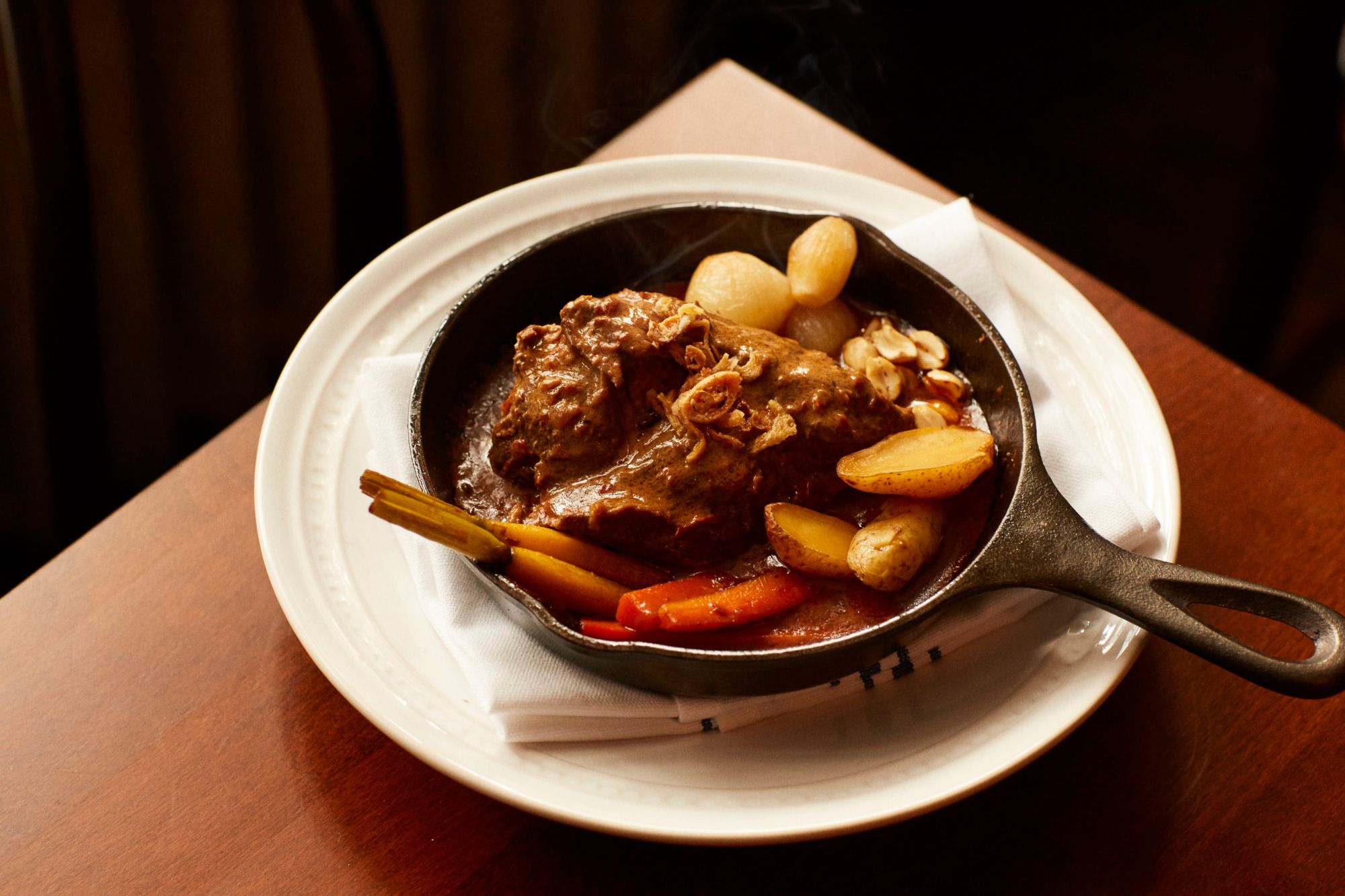
He says through his experience working at Per Se and visiting The French Laundry that Chef Keller taught him “what a restaurant is about.” A restaurant is not just about feeding people, Chef Yo says, it’s about “the experience you give them. No matter how much it costs. It doesn’t have to be fine dining, but every minute [a guest] comes into a restaurant…it’s an experience…Even the smell in the restaurant, the music, the lighting, the temperature…the warm welcome from the staff—every single detail… to me it’s like a big theater.”
Chef Keller has become his mentor, even helping Chef Yo edit his menu at Pinto Garden. “If you go to Pinto Garden, the menu is totally different from [Pinto Brooklyn]. We do farm fresh cooking over there…[but serve] very limited items…very selected…Over there we only have 15 items and [they are] seasonal.” The menu at Pinto Garden changes every month depending on the fresh ingredients currently available.
Chef Yo’s plans for the future include introducing more adventurous dishes to his guests, especially in Brooklyn. “But again, going back to theater, if you want to [say] something to a specific audience, you have to speak the story that they want to hear…. It’s the same with food…. Like if I introduce something that they don’t know, then they won’t want to eat it.” He continues, “I’m testing it right now. It’s been a year. I think I know a little bit more about [the Brooklyn customer]. I have to create a menu that everyone in the family will enjoy. There’s a family crowd here.” In comparing his customers in the West Village with those in Brooklyn Heights, he says, the Pinto Garden menu is “more Thai, more authentic. We focus on 4 regions in Thailand…it depends on the ingredients available.”
He says overall, “today the way people are eating food is different from the last 10 years. I can see from my guests—they used to only ask for pad thai with chicken, but today…[at] Pinto Garden…we don’t have pad thai with chicken…people tend to be more adventurous.”
In terms of more daring dishes, he’s introduced a Thai version of steak tartare. “People don’t know that Thai people eat [steak tartare] in the northeast [of Thailand.] I have room to introduce some dishes into the western culture and people [can] learn what they are…. If I serve steak tartare…the way Thai people eat it, people [might] be scared…” He describes the Thai presentation of steak tartare as less refined, with the blood of the cow visible on the plate, so he presents it more like traditional French steak tartare. “People know what that is and they eat it. It’s easier to approach them…”
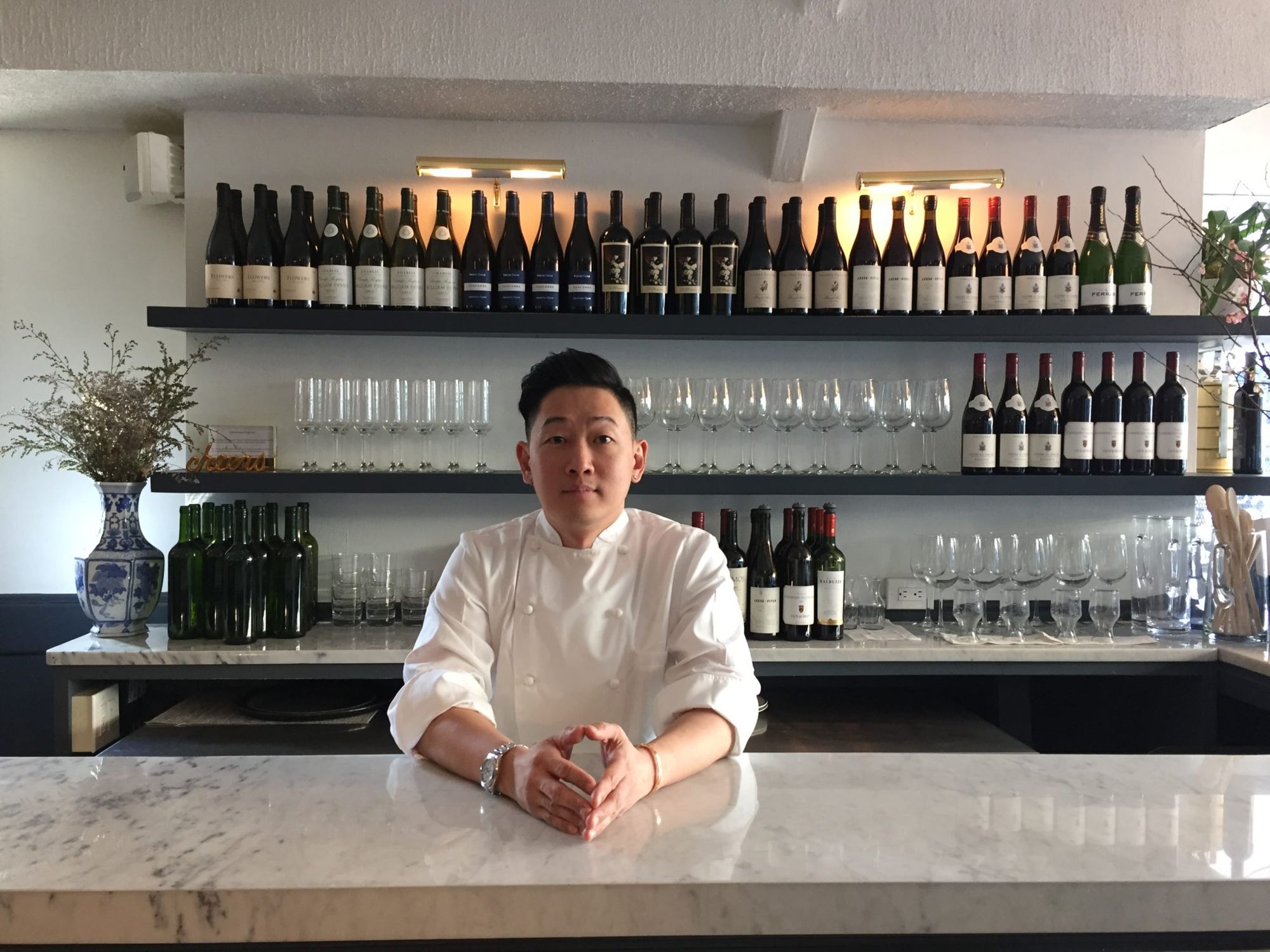
Regarding the understated presentation of his elegant yet comfortable Brooklyn restaurant, Chef Yo points out, “You don’t need to have a Buddha…. You don’t need to have bamboo. You don’t need to have something that [suggests] you’re in Thailand, because you’re not. You’re in New York. And this is a restaurant in New York. I think this fits Brooklyn.”
Comparing it to his beloved Sunset Boulevard, which he also saw back in 1994, he says he prefers the new production because “they have no set at all…you can see the raw material. You don’t go see a Broadway show with all the fancy, sophisticated sets anymore because it’s not real. The production is so raw. I love it. I think it’s the same thing with the restaurant, you don’t need the fancy stuff to empower you or empower the food.”
Even though he misses the theater, rather than go back to directing at the moment Chef Yo would prefer to expand his restaurant business, saying “I think the restaurants are like my theater these days…. In the future I’d definitely love to have a restaurant in Napa Valley—there’s no Thai food there.” He’s even considered Asia, saying, “Tokyo, that would be an amazing place to explore and see… that’s my dream project. But mainly New York is New York. You cannot go wrong with New York.”




